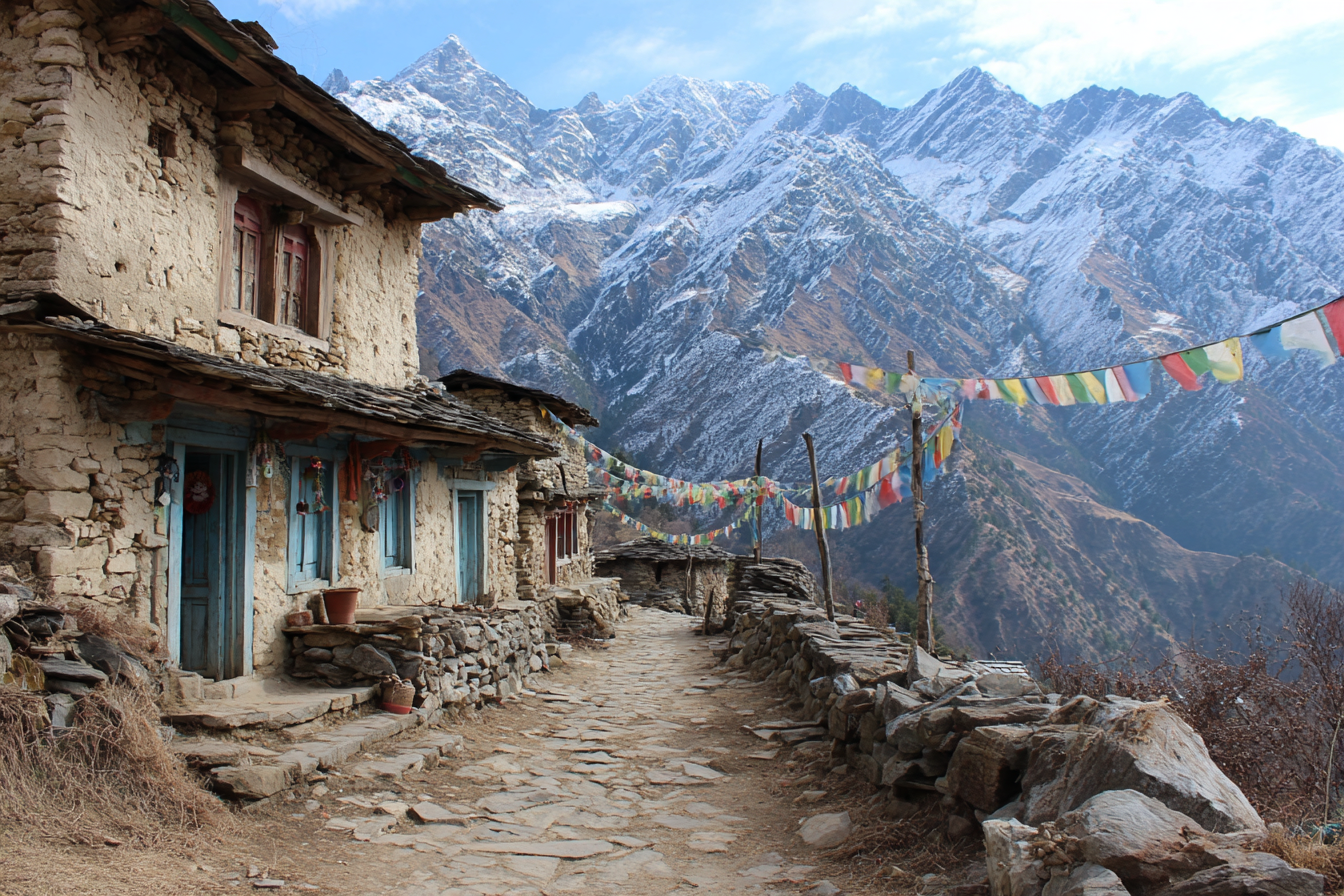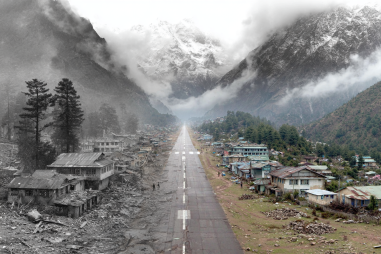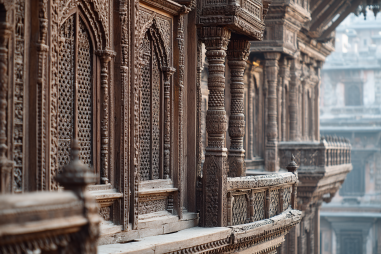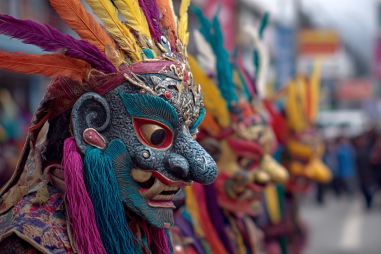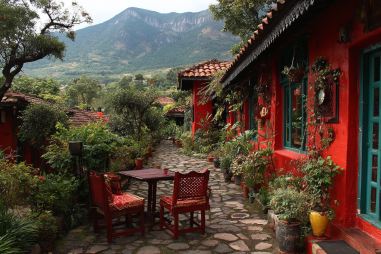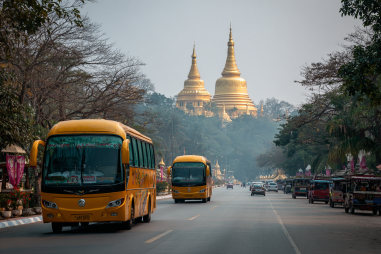Nestled amidst the towering peaks of the Himalayas, the Annapurna Base Camp trek is famed for more than just its breathtaking natural beauty. As you traverse this spectacular route, you’ll find yourself immersed in a rich cultural tapestry that reflects the traditions and lifestyle of the indigenous people. The Gurung and Magar communities, predominant along the trail, offer trekkers a unique glimpse into Himalayan culture, from age-old customs and festivals to distinctive architecture and cuisine. Exploring these cultural elements transforms the trek from a mere physical journey into an enriching mental and emotional adventure.
Ethnic Groups Along the Annapurna Trail
The Annapurna region is home to several ethnic groups, with the Gurung and Magar communities being the most prominent among trekkers’ interactions. These groups have inhabited the area for centuries, maintaining distinct languages, customs, and social structures. The Gurungs, traditionally known as warriors and skilled mountaineers, have a strong presence around villages like Ghandruk and Nayapul. Meanwhile, the Magars, historically known as farmers and traders, are found in various villages along the trail as well. Each group has contributed richly to the cultural fabric of the Annapurna region and preserves traditions that are deeply connected to the mountain environment.
Local Customs and Traditions
Cultural life here is deeply rooted in community and tradition. Both Gurung and Magar people place a high value on hospitality and respect for elders. When visiting, it’s customary to greet locals with a “Namaste”—a gesture of folding your palms together with a slight bow. Traditional dress, often worn during festivals and ceremonies, features vibrant patterns and handwoven fabrics, symbolizing identity and heritage. Many villagers still practice weaving, pottery, and wood carving, crafts passed from generation to generation. It’s common for local families to share stories and songs that echo the region’s rich oral history, creating a warm and welcoming environment for visitors.
Religious Practices and Festivals
Religion plays an essential role in daily life, influencing festivals, rituals, and social norms. Most locals follow a blend of Tibetan Buddhism and Hinduism, which coexist harmoniously in the region. Monasteries and stupas dot the landscape, serving as spiritual centers and places for meditation and prayer. Festivals punctuate the year with vibrant celebrations. One of the most notable is Tihar, the festival of lights, where homes and streets glow with lamps and colorful decorations. Another is Losar, the Tibetan New Year, marked by masked dances and communal feasts. These events provide trekkers with a rare opportunity to witness the communal spirit and age-old religious traditions that sustain local identity.
Typical Village Life and Architecture
The villages along the Annapurna trek are alive with traditional architecture and daily routines that have changed little over generations. Houses are often built from locally sourced stone and wood, designed to withstand harsh mountain climates. Distinctive features include intricately carved wooden windows and doors, and flat roofs where crops are dried. Village life revolves around agriculture, animal husbandry, and small-scale trade, with terraced fields cascading down hillsides. Despite increasing tourism, many villagers maintain a simple lifestyle characterized by close-knit community bonds and a deep connection to the natural surroundings.
Interaction with Locals: Etiquette and Language
Engaging respectfully with local communities enhances your experience and fosters mutual understanding. English is becoming more common among younger generations, especially those involved in tourism, but basic Nepali phrases or learning simple greetings in Gurung or Magar languages can go a long way in establishing rapport. Always ask permission before photographing people, particularly in more remote or sacred areas. When invited into homes, it’s polite to accept a cup of traditional butter tea or local spirit as a sign of respect. Remember to dress modestly and observe local customs, such as removing shoes before entering a home or monastery.
Cultural Landmarks and Monasteries
Scattered along the trek are several cultural landmarks that offer insight into the region’s spiritual heritage. Monasteries reflect Tibetan Buddhist architecture with colorful prayer flags fluttering in the wind and prayer wheels spun by devotees. One such notable site is the Saraswati village, home to a charming temple dedicated to the goddess of knowledge. Other landmarks include chortens (stone reliquaries) and mani walls—long rows of stones engraved with prayers. Visiting these sites allows trekkers to appreciate the harmony between spiritual practice and daily mountain life, offering moments of reflection amid the majestic surroundings.
Food and Culinary Traditions
Local cuisine is a highlight of the trekking experience, showcasing Himalayan simplicity and nutritional wisdom. Dal bhat—lentil soup served with rice—is the staple meal, often accompanied by seasonal vegetables and pickles. Popular snacks like momo (Steamed dumplings filled with vegetables or meat) and sel roti (a sweet, ring-shaped rice bread) offer delightful flavors and comfort on cold evenings. The use of buckwheat, millet, and barley in various dishes reflects adaptation to the high-altitude environment. Sharing meals with local families is a wonderful way to connect and experience traditional hospitality firsthand.
Impact of Trekking on Local Communities
The surge in trekking popularity has undeniably brought economic benefits to the Annapurna region, improving access to education, healthcare, and infrastructure. However, it also presents challenges. Increased foot traffic can strain local resources and affect traditional ways of life. Some villages have seen rapid modernization, altering cultural landscapes and lifestyles. Environmental concerns like waste management and deforestation have also come to the fore. Balancing tourism growth with cultural preservation is now a critical issue, requiring awareness and responsible travel practices by visitors and stakeholders alike.
Supporting Sustainable Cultural Tourism
As a traveler, you can play an important role in promoting sustainable and culturally sensitive tourism. Choose locally owned teahouses and guides to ensure your spending supports the community directly. Participate in cultural experiences offered by locals, such as cooking classes, craft workshops, or guided village tours, which help preserve traditions and create meaningful exchanges. Avoid purchasing souvenirs that harm the environment or exploit local artisans. Always practice “leave no trace” ethics, respecting the land and customs. By doing so, you contribute to safeguarding the rich cultural heritage that makes the Annapurna Base Camp trek more than just a scenic route.
Embracing the Local Culture on Your Trek
Embarking on the Annapurna Base Camp trek offers a profound opportunity to connect with the culture of the Himalayan people. Beyond the stunning vistas lies a living culture full of hospitality, resilience, and spiritual depth. Taking time to learn about the Gurung and Magar traditions, participating in local festivals, tasting authentic cuisine, and engaging with village life enriches your journey immeasurably. This cultural immersion not only broadens your understanding of a unique world but also fosters respect and appreciation for the heritage that thrives in these mountain communities. Ultimately, embracing the local culture transforms a trek into a truly unforgettable adventure.

